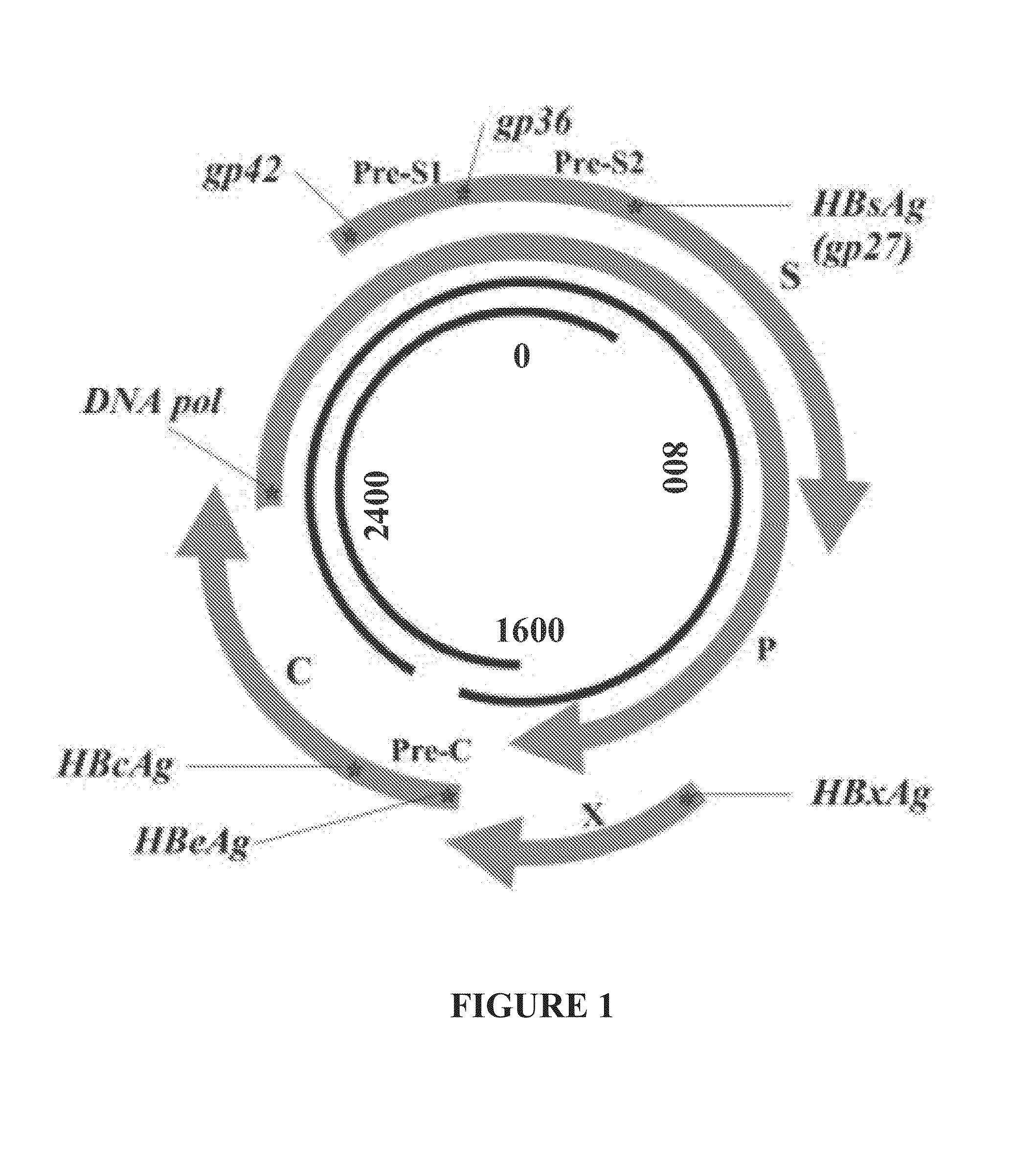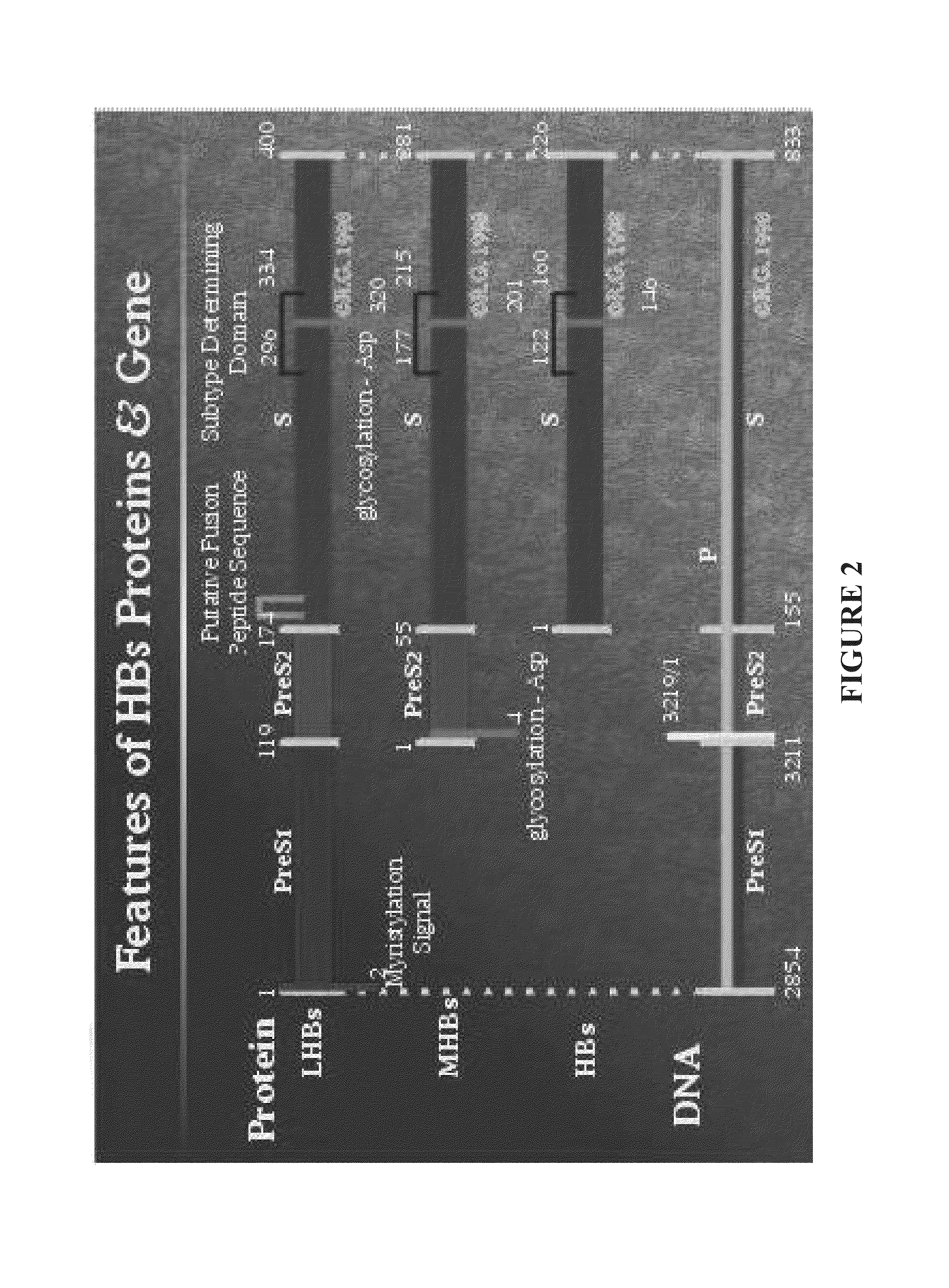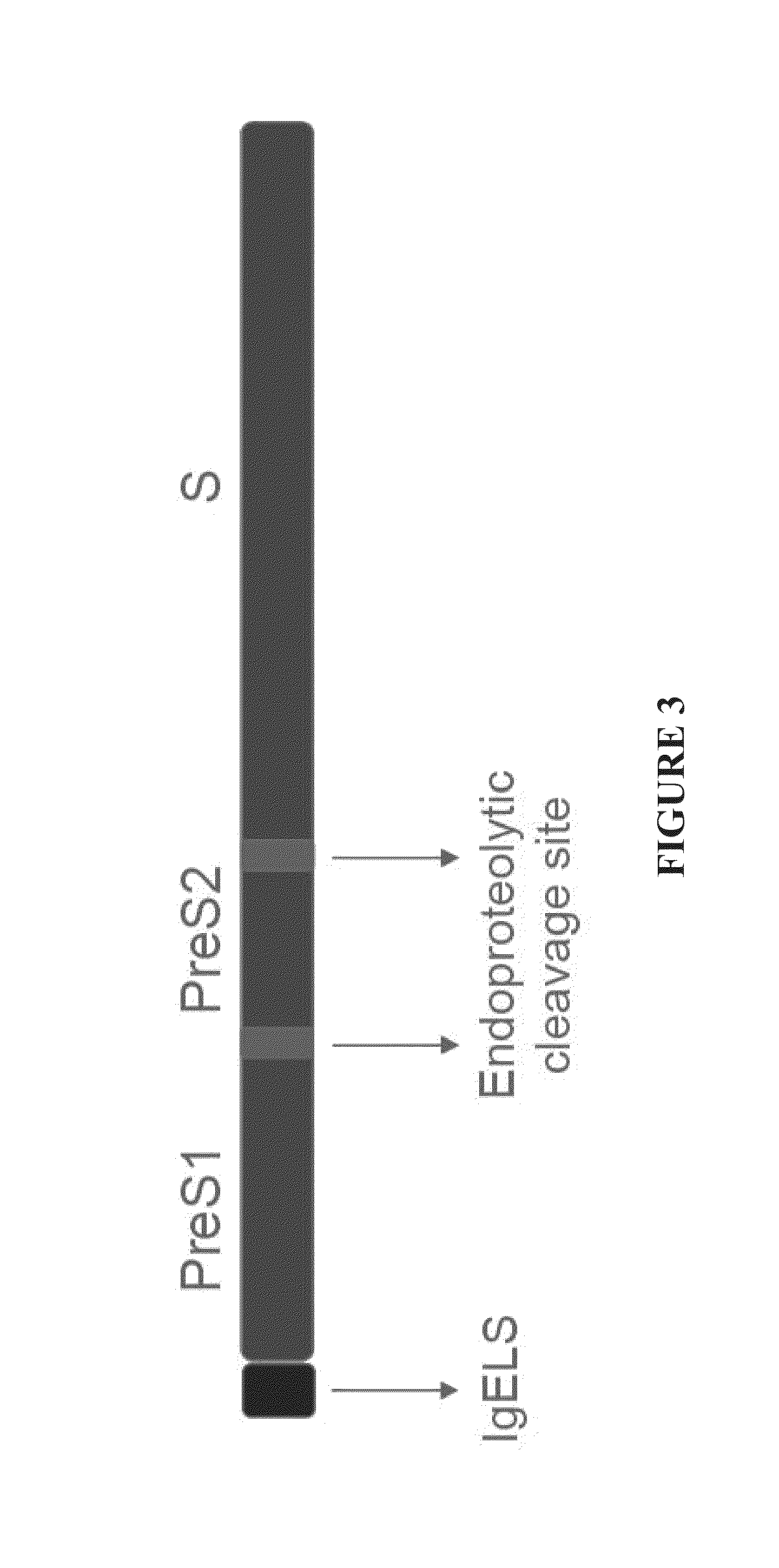Nucleic acid molecule encoding hepatitis b virus core protein and surface antigen protein and vaccine comprising the same
- Summary
- Abstract
- Description
- Claims
- Application Information
AI Technical Summary
Benefits of technology
Problems solved by technology
Method used
Image
Examples
example 1
[0220]A consensus HBV core protein, also referred to as HBV modified or M-core construct, was designed from epitope sequences from HBV genotypes A, B, C, D and E. HBV core protein sequences from these genotypes were selected for inclusion in a construction of a consensus core that would induce immunity against a broad range of genotypes, thus providing a universal vaccine for HBV. In some embodiments, modifications of the M-core construct included addition of an IgE leader sequence. In some embodiments, the M-core protein is encoded using codon optimization and RNA optimization for enhanced expression.
1. Construction and Expression of Consensus Core Antigen
[0221]An HBV genotype A, B, C, D, and E Core consensus nucleotide sequence was constructed by generating consensus sequences of core genes for each genotype and then generating a consensus sequence of all five genotype consensuses, thus a bias toward heavily sequenced genotypes was avoided. Additionally, the sequences were collect...
example 2
[0249]Consensus HBV surface proteins were designed from epitope sequences from primary isolates of HBV genotype A such that the resulting consensus protein had sequence identities of 94.2 percent to 99.8 percent with the surface proteins of HBV genotype A primary isolates. Particularly, two versions of such a consensus protein were designed (FIG. 4). One included the S protein and is also referred to as SHBs-A, in which SEQ ID NO:13 is the nucleic acid sequence and SEQ ID NO:14 is the amino acid sequence. The second included S protein, pre-S2, and pre-S 1 and is also referred to as LHBs-A, in which SEQ ID NO:9 is the nucleic acid sequence and SEQ ID NO:10 is the amino acid sequence.
[0250]Consensus HBV surface proteins were also designed from epitope sequences from primary isolates of HBV genotype C such that the resulting consensus protein had sequence identities of 96.5 percent to 99.8 percent with the surface proteins of HBV genotype C primary isolates. Particularly, two versions ...
example 3
[0258]Similar to the experiments with mice in Example 2, splenocytes will be isolated from the immunized Rhesus monkeys of Example 2 to examine the levels of INF-γ and TNF-α secretion in response to administration of the combination of consensus core and consensus surface antigens. It will be determined if the CD8 and CD4 T cells of the immunized monkeys from Example 2 have similar characteristics as the mouse CD8 and CD4 T cells studied in Example 1.
[0259]CD8 and CD4 T-cells will be taken from the spleens of the Rhesus monkeys of Example 2. The CD8 and CD4 T-cells will be studied via polyfunctional and phenotypic flow analysis to examine the secretion of tumor necrosis factor, interferon gamma, and CD107a from these CD8 and CD4 T-cells.
[0260]The Rhesus monkeys of Example 2 will be used in a post-vaccination killing assay.
PUM
| Property | Measurement | Unit |
|---|---|---|
| Fraction | aaaaa | aaaaa |
| Fraction | aaaaa | aaaaa |
| Immunogenicity | aaaaa | aaaaa |
Abstract
Description
Claims
Application Information
 Login to View More
Login to View More - R&D
- Intellectual Property
- Life Sciences
- Materials
- Tech Scout
- Unparalleled Data Quality
- Higher Quality Content
- 60% Fewer Hallucinations
Browse by: Latest US Patents, China's latest patents, Technical Efficacy Thesaurus, Application Domain, Technology Topic, Popular Technical Reports.
© 2025 PatSnap. All rights reserved.Legal|Privacy policy|Modern Slavery Act Transparency Statement|Sitemap|About US| Contact US: help@patsnap.com



